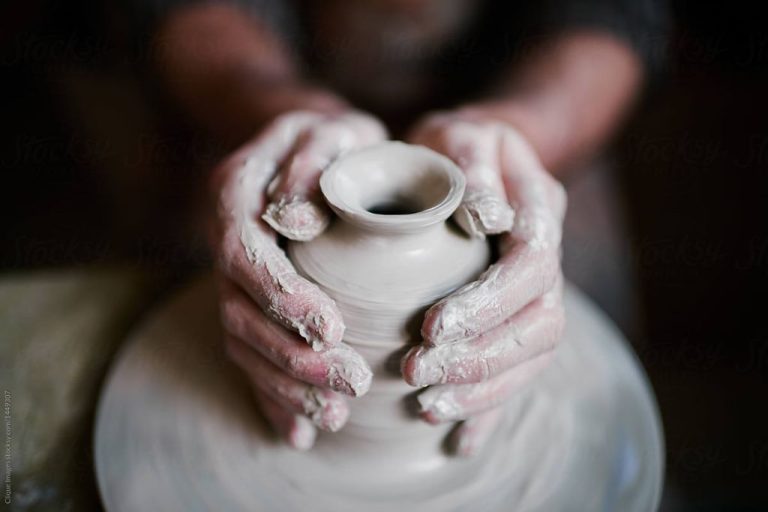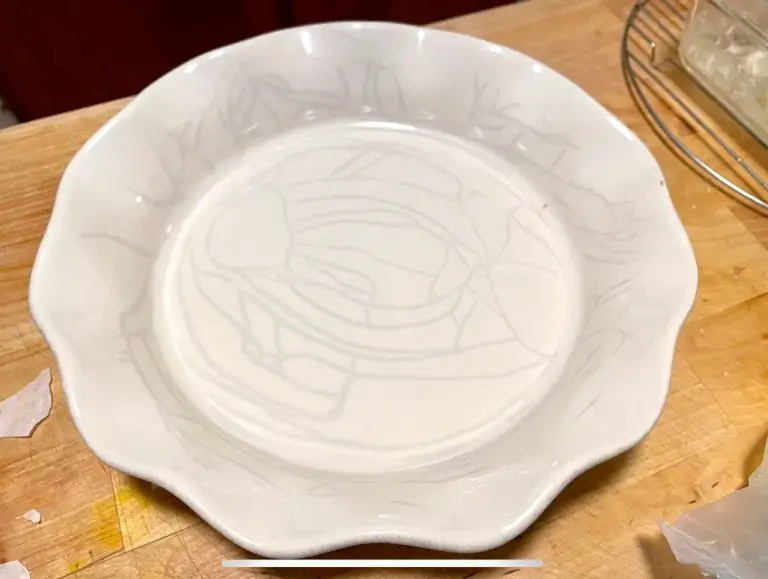What Can You Use To Write On Clay?
Clay is a natural material made from minerals found in the earth. It is soft and malleable when wet, making it easy to shape, but can be hardened through firing processes. Clay has been used for centuries around the world for creating pottery, sculpture, tiles, and other decorative or functional items.
One unique use for clay is as a creative canvas for writing, drawing, and painting. When wet, the soft surface of clay can be marked on using a variety of tools. As it dries, the markings become permanent, fixed into the clay. Clay can then be decorated, fired, and sealed for long-lasting finished artwork.
Pencils
Pencils are one of the most common writing implements that can be used on clay. The graphite in pencils allows for smooth, dark lines that show up well on the clay surface. There are a few types of pencils that work especially well:
Graphite Pencils – These are the standard #2 pencils found in most households and schools. Their graphite leads come in a range of hardnesses, with softer leads (like a #2B) depositing more graphite for darker marks. Harder leads (like a #2H) leave lighter lines. A mid-range HB is a good all-purpose option.
Colored Pencils – Wax-based colored pencils come in every hue and can add flair to clay creations. Their soft leads provide vivid color while still being blendable. Water-soluble colored pencils offer even more versatility when used with a wet brush.
Charcoal Pencils – Made from compressed charcoal, these pencils produce rich blacks for dramatic dark lines. They generate plenty of dust, so using a kneaded eraser helps keep the clay clean.
The key with any pencil is to avoid pressing too firmly, which can indent or scratch the clay surface. Light, layered strokes build up tone while preserving the sculpture’s form. Many artists sketch outlines first with an HB pencil before refining with softer leads. Pencils give great control for detail work on clay.
Pens
Pens are one of the most common tools used to create art on clay. The smooth tips allow for detailed line work and filling in large areas with color. There are a few main types of pens that work well on clay:
Ballpoint Pens
Standard ballpoint pens can make thin, precise marks on baked polymer clay. The ink dries quickly and remains on the surface. Ballpoints work best on smooth clay rather than porous surfaces. Press lightly to avoid indenting the clay.
Gel Pens
Gel pens contain water-based pigmented ink that flows cleanly onto baked polymer clay. The ink shows up brightly and resists fading. Gel pens work well for outlining and coloring in details. Metallic and glitter gel pens add special effects.
Acrylic Paint Pens
Paint pens have thick, acrylic paint inside that adheres well to polymer clay. They easily cover large areas. The pointed tip allows both broad strokes and fine details. Paint pens come in metallic sheens, neon hues, and glitters.
Paintbrushes
Paintbrushes come in a wide variety of types, sizes, and styles that allow for different artistic effects when used on clay. The three main types of paintbrushes are bristle, synthetic, and natural hair.
Bristle brushes are made from hog hair or a stiff synthetic material. They are ideal for covering large areas and smoothing out clay surfaces. Bristle brushes hold a lot of paint and provide good paint release.
Synthetic brushes use nylon or polyester bristles. They work well for delicate work and detail painting. Synthetic bristles are softer and more flexible than natural bristles.
Natural hair brushes utilize weasel, goat, badger, or sable hair. They create smooth strokes and fine lines. Natural hair is excellent for controlled paint application on clay.
Paintbrush sizes range from very fine detail brushes to large wide brushes. Tiny brushes allow you to paint intricate designs. Broad brushes cover expansive areas rapidly. Select sizes suited for your clay project’s needs.
When using paintbrushes on clay, it helps to slightly wet the bristles first. This prevents the clay from absorbing too much water from the paint. Dip the brush in water and wipe off excess before painting.
Markers
Markers are a popular choice for drawing and writing on clay. Permanent markers often work best since the ink will not wash off the baked clay. Look for alcohol-based markers, as these will fully dry on the clay’s surface. Acrylic markers are another good option, as they provide vivid color that adheres well to polymer clay. Oil-based markers should be avoided since they may bleed and smear.
Sharpie and other permanent markers are go-to choices for many clay artists. They come in a wide range of colors from basic shades to metallic and neon options. Sharpies will write smoothly on conditioned clay. Let any writing fully dry before baking so it sets properly. Other good brands to try are Sakura Permapaque markers and Bianyo Professional alcohol markers. These will generally last through baking without fading or bleeding too much.
If using markers on clay, it’s best to condition the surface first so the ink adheres properly. Smooth out any creases and fingerprints so you have a nice flat canvas. Acrylic paint pens like Posca also work well for adding fine details and thicker lines to clay. Just take care when baking painted clay, as some lower-quality pens may fade at high temperatures. Test a sample first. In general, high-quality permanent and acrylic markers are versatile options for decorating polymer clay.
Crayons
Crayons are a classic writing and drawing tool that can be used on clay. The most common types of crayons that work well on clay are wax-based crayons and oil pastels.
Wax-based crayons come in a wide variety of colors, are easy to grip, and glide smoothly across the clay surface. They can be used to add color and details like patterns or designs to clay creations. The wax provides a nice vivid color payoff on the clay. Wax crayons can help bring characters and shapes to life with color.
Oil pastels are another great option for adding color to clay. They have a soft, buttery texture that blends well on the clay surface. Oil pastels enable subtle blending and gradient effects for a painterly look. Like crayons, they come in a wide array of colors. Oil pastels also provide good color payoff and vibrancy on clay.
Both wax-based crayons and oil pastels are easy to use and control for coloring clay. They can add creativity and personalization to any clay project.
Chalk
Chalk is a versatile and affordable option for using on clay. There are two main types of chalk that work well: sidewalk chalk and chalk pastels. Sidewalk chalk creates bright, vibrant colors on clay. Because it’s made for drawing on rough concrete surfaces, it adheres well to the clay’s texture. Sidewalk chalk is great for kids to use on modeling clay, as it’s easy to grip and provides bold colors.
Chalk pastels are another chalk variety made specifically for art. They come in a wide range of colors with rich pigmentation. Pastels glide smoothly onto clay and create colorful designs. Blending the pastel on the surface also produces beautiful color gradations. Pastels are available in soft and hard formulations. Soft pastels work best on clay as they transfer more pigment. When using pastels, it helps to spray the clay with workable fixatif spray to help the chalk adhere. Overall, chalk is an easy, mess-free option for adding color and designs to clay.
Inks
Inks can create beautiful effects when used to draw or write on clay. Two types of inks that work particularly well are India ink and acrylic ink.
India ink, also known as Chinese ink, is a type of black ink originally used in East Asia for calligraphy and brush painting. It is typically made from lampblack pigment mixed with a binder such as gelatin or shellac. India ink flows smoothly and dries quickly on clay. It produces crisp black lines and details. The ink is waterproof when dry, making it a versatile option for decorating clay.
Acrylic inks are pigmented acrylic paints designed to be used like ink. They have a very fluid, ink-like consistency. Acrylic inks come in a wide range of vibrant colors beyond just black. They work beautifully when painted or written on polymer clay. The colors are bold and vivid. Once baked, acrylic ink designs are permanent, durable, and water-resistant.
Both India ink and acrylic inks allow for creative techniques like calligraphy, hand lettering, drawing, painting, and more on clay. They can help add graphic designs, handwritten text, or artistic details to polymer clay pieces.
Natural Items
Nature provides its own canvases and tools for creating art with clay. Using items found outdoors is an eco-friendly, creative way to make impressions and designs in clay. Here are some of the most common natural items used:
Sticks
Sticks and twigs can create linear designs, scratch textures, or press patterns into soft clay. Look for sticks with interesting shapes or textures. Trim them to a workable size. Soak dried sticks before use to prevent breakage.
Feathers
Feathers from birds can make lovely impressions in clay with their delicate strands and details. Gently press them into the clay at an angle to transfer the feather pattern. Peacock and turkey feathers work especially well, but any feather can be used.
Leaves
Leaves pressed into clay leave behind their veins and silhouette outlines. Leaves with prominent veins like maple and tropical leaves are great choices. Make sure leaves are washed and dried fully before pressing them to avoid stains.
Unconventional Items
If you want to get creative with your clay art, you can use a variety of household items to make interesting impressions, textures, and details. Some unique options include:
Q-tips: The cotton tips on Q-tips can be pressed gently into soft clay to make tiny dots or textures. Q-tips are great for adding details like pores, scales, feathers, or other small effects. Just dip the tips in a bit of water so they don’t stick to the clay.
Toothpicks and skewers: Toothpicks or bamboo skewers are useful for engraving lines and patterns into clay. Their tapered points can create fine lines for details like hair, fur, or scales. They can also be used to pierce holes for adding strings or appendages.
Plastic forks: Press the tines of a plastic fork into clay to make the look of feathers, fur, or scales. Bend the tines a bit for more variation. Plastic forks can create interesting patterns on any clay model.
With some imagination and experimentation, many everyday objects around the house can become handy clay sculpting tools. Don’t be afraid to try unusual items and discover new textures and effects.



